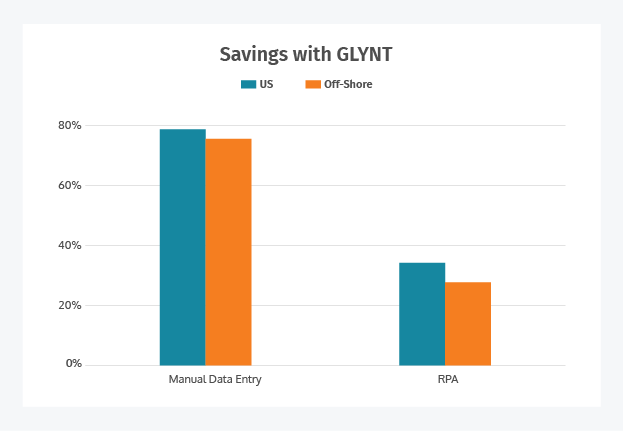The TCO calculators are set up for various inputs: local labor rates; productivity inputs and vendor fees. The calculator starts with the cost of data entry, then calculates the cost of data review and concludes with the cost of fixing a small number of errors later in the workflow, when they are more expensive to fix.
As the graph above shows, GLYNT has nearly 80% savings over manual data entry and 30% savings over RPA.
The strong results are driven by three factors, and in each GLYNT has the advantage.
• Accurate Straight-Through Processing. Avoiding errors is the best way to minimize costs. GLYNT typically produces incredibly accurate data. In the TCO calculator the accuracy metric is Golden Documents, the percent of documents processed with 100% correct data using just straight-through processing. GLYNT typically exceeds 85%. RPA average 70 – 75%.
• Document coverage. Recent RPA pricing is fairly low. But, RPA works best when the document is fairly standard, and but misses a lot of data when there are document variants. The exception pile gets large, humans must do a lot of extra work and the overall accuracy rate goes down. This adds significant expense. GLYNT has nearly 100% document coverage.
• Error fixing late in the workflow. Errors downstream in a workflow are the most expensive to fix. Suppose an invoice comes in, the data is captured and the account number is incorrect, and that the error is discovered only when the data fails to match a PO. Now a clerk must search to find the correct account number. It’s a very expensive process, as the clerk must figure out the cause of the error and then search for the correct information. If the error was caught with an automated script earlier, much time and money is saved.
Interested in seeing how GLYNT can handle your workflow? Get in touch and test out one of our TCO calculators.





